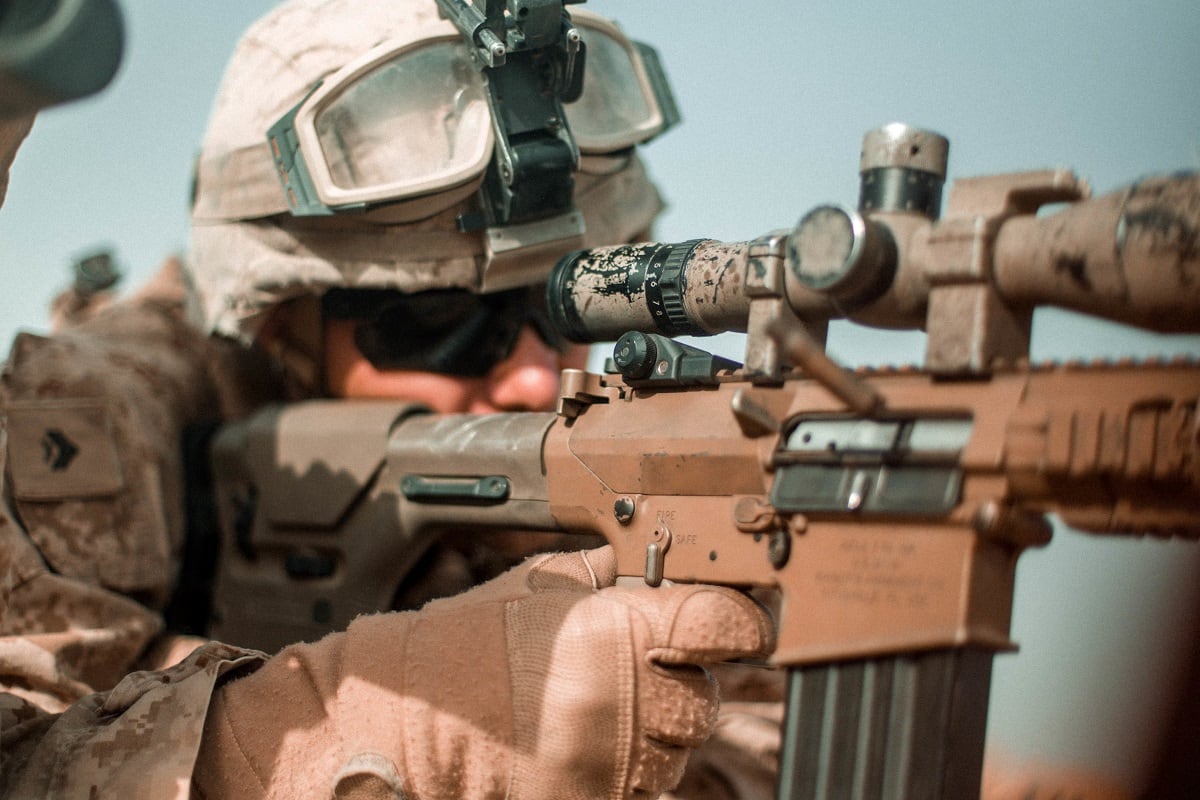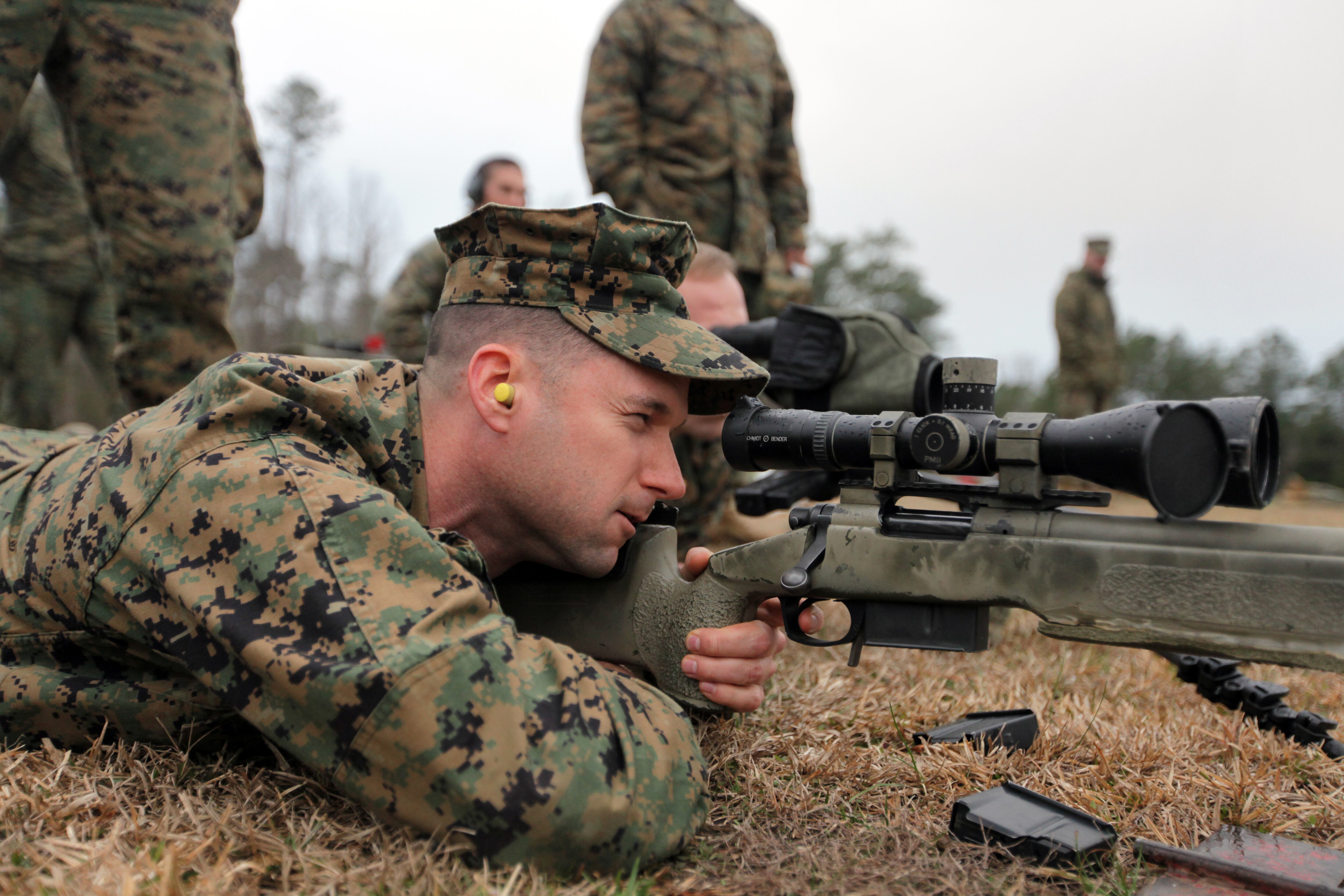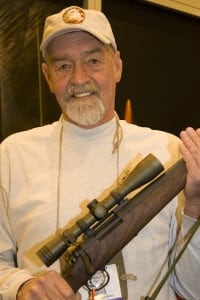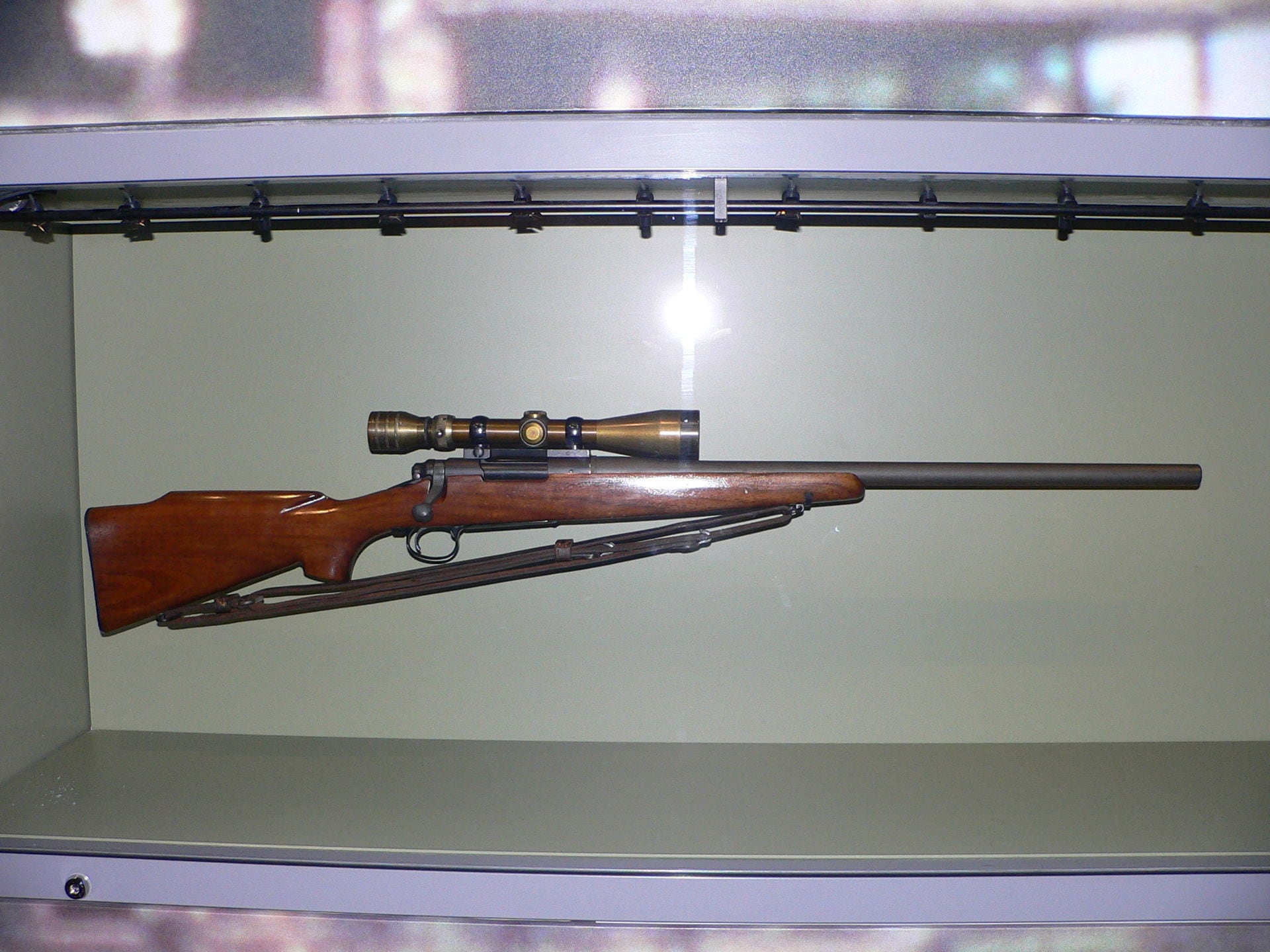Even as the Marine Corps updates its rifle optics and shooting qualifications, it doesn’t forget its history.
Recently Marines at Weapons Training Battalion, Camp Lejeune, North Carolina, dubbed their firing desk “Redfield” during a renaming ceremony at Stone Bay, according to a Marine Corps statement.
Call words on firing ranges are crucial, helping those who control the multi-area shooting events communicate and coordinate.
Redfield might be an obscure reference for young Marines in their early marksmanship training but it holds a special place in the sniper community, especially those who are steeped in the legend and lore of the sniper’s role in the Vietnam War.
“This is history we must remember; marksmanship is our blood as Marines, and WTBN is the life blood of our marksmanship community,” said retired U.S. Marine Corps Sgt. Maj. Bryan K. Zickefoose. “We must remember where we came from, those marksmanship skills we’ve honed over the many years, we must continue to grow and make them better.”
RELATED

Many a Marine can quickly name at least one famous sniper, Gunnery Sgt. Carlos Hathcock, credited with 93 confirmed kills in Vietnam and an estimated 200–300 more probable kills.
Probable kills are those in which it is likely that the shot killed the target but for lack of third party verification or if the verification would pose a significant risk to safety it could not be performed.
Hathcock’s exploits were told in various books, the most recognized “Marine Sniper: 93 Confirmed Kills,” by Charles Henderson.

But it is another Marine to which the Redfield naming tips its hat: Sgt. Charles “Chuck” Mawhinney, who holds the official Marine Corps record for the conflict of 103 confirmed kills over 16 months between 1968–1969 and another 216 probable kills.
That tally included 16 headshots in a single day near the An Hoa base outside Da Nang, Vietnam.
Side note: Likely to the chagrin of many a Marine sniper, the top tally for confirmed kills by a sniper in Vietnam is held by a soldier. Army Staff Sgt. Adelbert Waldron notched 109 confirmed kills in eight months.
Mahwinney was the son of a Marine Corps World War II veteran but was actually intending to join the Navy after he graduated high school in 1967. But a Marine recruiter promised him he could hold off joining until after deer season that year.
The avid outdoorsman couldn’t miss another Oregon deer season so that sold him on the Corps.

“I started shooting at a very young age, and he taught me to shoot like the Marines taught him, so there wasn’t any big transition from hunting in Oregon to becoming a sniper,” Mahwinney told American Rifleman in 2012.
And he did it all with the M40 sniper rifle and a Redfield 3x9x40 scope.
“Well, the rangefinder was set up to work with the scope on 3X, but when turning my scope up to 9X the zero would change about one minute of angle. So, I just left the scope on 9X and sighted-in at 500 yards, estimating the range on shots,” Mahwinney told American Rifleman magazine.
The backwoodsman and his fellow snipers used some hunting know-how on the snazzy new modern rifle. They kept rain off the scope’s lenses with the typical homemade deer hunter’s solution, a strip cut from a truck tire inner-tube.
“Most of our shots came from 300 to 700 yards, due to the terrain. We mostly shot from sitting and shooting from sitting at somebody 1,000 yards away is senseless,” he said.
The M40 entered service in 1966 and saw five variants with upgrades until 2009. It is built off of the Remington 700 bolt-action rifle platform, one of the most popular civilian hunting rifles of all time.
The 7.62 mm rifle gage an on-the-paper reach of more than 800 yards, but in practice was often effective at even farther distances.
The Redfield scope was paired with the M40 from the beginning. The easily-recognizable green anodized finish optic is highly prized among collectors still. For the time, it’s 600-yard ranging feature, built into the reticle, was state-of-the-art. The Redfield’s tapered scope mount mimicked earlier World War II-era sniper rifle features, providing a streamlined fit and lower profile than other mounting options.
Variants of the M40 were still the Marine Corps’ sniper rifle of choice for decades after the Vietnam War and beyond. Even as other services swapped out to different weapons, the Marines stuck with the M40 though did pursue other options for development.
It wasn’t until 2018 when the Corps officially announced a switch from the M40 to the Mk 13 Mod 7, chambered in .300 Winchester Magnum, a modern sniper rifle with a round that easily reached to 1,000 yards or more that the M40 began to be phased out of service.
With even faster evolutions in modern optics, the Redfield scope actually had been decoupled from the M40 long before.
Post-war upgrades to the rifle included a synthetic stock to avoid the problems associated with wood stocks, susceptible to accuracy problems when wood swelled due to humidity.
The optic has some shortcomings that were addressed with later replacements, the variable plastic ring could crack and the built-in range finder was helpful but sensitive, too much heat or direct sunlight could actually melt the feature.
A new scope, made by Unertl, which had provided optics for the Marines and other services since World War II, eventually replaced the Redfield in the 1970s.
The Redfield company was eventually acquired by Leupold. Mawhinney had teamed with staff at Remington in 2006 to do a rebuild of the original M40. Because many had their wood stocks replaced after the war there were few that matched what he carried into the bush, according to American Rifleman.
Once they’d built the rifle ― exactly 103, one for each of his kills ― they approached Leupold about a companion optic. The company, specifically a former Marine officer and vice president within the company named Kevin Trepa, built a 3-9X scope to match.

Mawhinney’s original M40 was discovered at the Weapons Training Battalion at Marine Corps Base Quantico and, in 1996, retrofitted to the same specifications as it had when he used it in Vietnam.
It is now on display at the National Museum of the Marine Corps outside Quantico, Virginia.
Todd South has written about crime, courts, government and the military for multiple publications since 2004 and was named a 2014 Pulitzer finalist for a co-written project on witness intimidation. Todd is a Marine veteran of the Iraq War.





